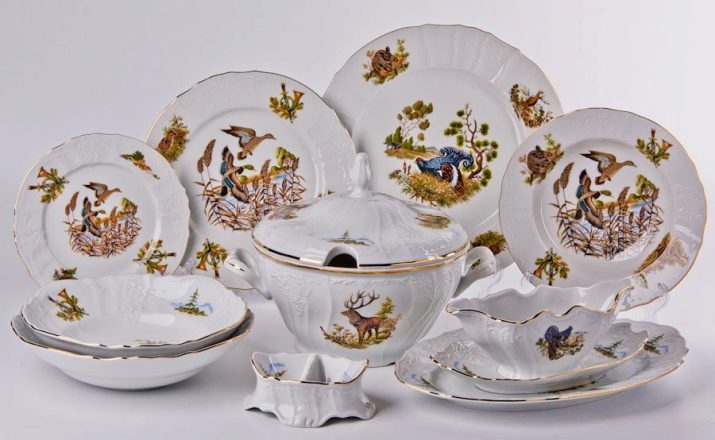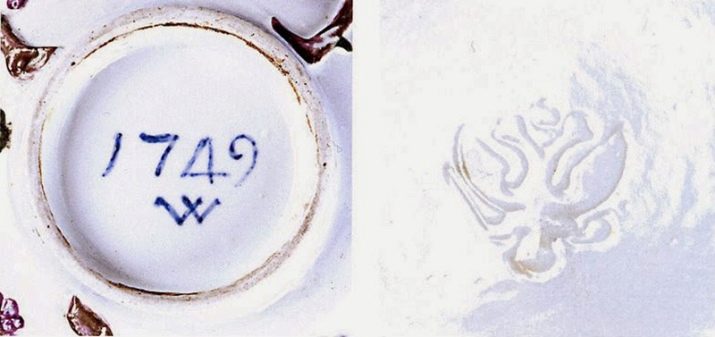Antique dishes: types and nuances of choice

Ancient dishes are diverse, beautiful and unusual, as if the spirit of the era soars in it, it reflects the culture of our ancestors. Some examples are so luxurious that they are recognized as real works of art. Antique dishes are expensive and can only be found from collectors or in special shops selling items of great historical value.


Terminology
Antique dishes these days are most often purchased by collectors and lovers of antiquity. To avoid confusion, let's immediately define the basic terms.
In accordance with the law of the Russian Federation "On the export and import of cultural property" antiques are all items produced more than 50 years ago... It is forbidden to export such products from the country without special permission, even if they do not cost a lot of money.
It is, rather, a formal term, while for collectors such a concept as a rare thing. This category includes antiques for which the determining factor is not the time of production, but the historical value - it can be the name of the master, the fame of the first owners, a unique production technology or a limited edition.
It is these things that attract lovers of antiquity, and they are ready to give a lot of money for them.


Views
In the old days, dishes were made from a wide variety of materials. In Russia, kitchen utensils have been made from wooddecorating them with paintings, carvings and patterns. Most often used to create cutlery pine, spruce or birch, and burl dishes were considered the most expensive.
At the end of the 9th and beginning of the 10th century, the pottery craft developed rapidly, at that time it became widespread clay dishes. It was produced on a potter's wheel in the form of a cylinder, cone or oval.


Since the XII century, among the Russian and European nobility began to enjoy popularity silverware sets. They were highly valued, were considered real luxury items and were passed down from generation to generation as heirlooms. Aristocrats decorated spoons, cups and plates with their coats of arms and commemorative inscriptions.
Such dishes were varied, for example, each spoon had its own purpose. As a rule, all items from the table set were decorated with ornate patterns, floral ornaments and images of figures. Silver dishes have always been considered a sign of luxury, noble origin, wealth, and have invariably testified to the impeccable taste of the owners of the service.


In the pre-revolutionary era, they got mainstream copper and bronze sets, but especially highly valued porcelain cutlery - Now they are "hunted" by collectors in various countries of the world and the cost of such sets is very high.
Antique tableware is distinguished by a wide variety of materials, shapes, colors and textures - each item reflects the spirit of history and creativity of the country and nation. Nowadays, antiques never cease to amaze with their exquisite workmanship and unusual paintings.


How to choose?
Vintage is very expensive, some unscrupulous sellers take advantage of this, offering fakes to inexperienced collectors. In order not to become a victim of deception, it is necessary to comprehensively study the information about the product offered to you and the features of the era in which it was produced.
- Compare the patterns on the crockery with pictures on the Internet. This is especially true for those buyers who do not know the name of the cookware manufacturer. The fact is that many patterns are distinctive marks of individual craftsmen, so it is important to make sure that unique features and ornaments are identical. For example, in a factory Haviland made dishes with the most delicate floral decorations, and at the enterprise Wedgwood the leading theme has always been scenes from the ancient Greek epic or portraits.

- Rate the general features of the kit. A vintage service always costs more than one piece. In this case, you need to know that cutlery with a similar pattern is not always part of the same set. Therefore, it is very important to pay attention not only to the similarity of shapes, patterns and borders, but also to details: for example, identical objects should always be kept in the same color scheme, and the glazed coating should have the same quality.

- Look for the brand. This is the best way to identify a manufacturer of antique dishes, but it also happens that over time, the brand fades and becomes unreadable. Nevertheless, you need to look for it. - usually the marking is placed on the back of the cutlery. As a rule, this is an inscription, a stamp or a stamp. In order to find out the approximate cost of the set offered to you, you need to find information about similar devices in online auctions.
If you are convinced that the dishes you like are of historical value, you should contact a professional appraiser, who will already calculate its exact market value.

- Study the history. In different historical eras, different ornaments were popular. So, at the beginning of the last century, floral patterns with purple and pastel colors were in demand. Almost all cutlery had a curly rim.
In the 20-40s of the last century, the dishes were different strict geometry of shapes and bright colors... At this time, light beige gilded or silvered devices came to the fore. In the 40-50s, products of saturated shades of blue, red and green are more common.
In the 50s and 70s, it was popular porcelain with gilded edging... During this period, pastel shades returned to fashion, but they were already more subdued than in the pre-war period.



Evaluation guidelines
All the necessary information about the approximate cost of an antique table service can be obtained in libraries or through information sites on the Internet. But you should not resort to the services of online appraisers, no matter how attractive the prices for their services seem. The fact is that for a comprehensive assessment of the cutlery, it is not enough to see a photograph, you need to take the object in your hands in order to correctly determine its condition. Auction houses are also best avoided: most likely, they will try to tell you the increased cost.
It usually takes about a month to evaluate antique dishes. The professional must provide his client with a written report, which includes a description of the product, an overview of the methods used to determine the cost and the final price.
You will learn more about how to distinguish real Greek porcelain from fake porcelain in the following video.








